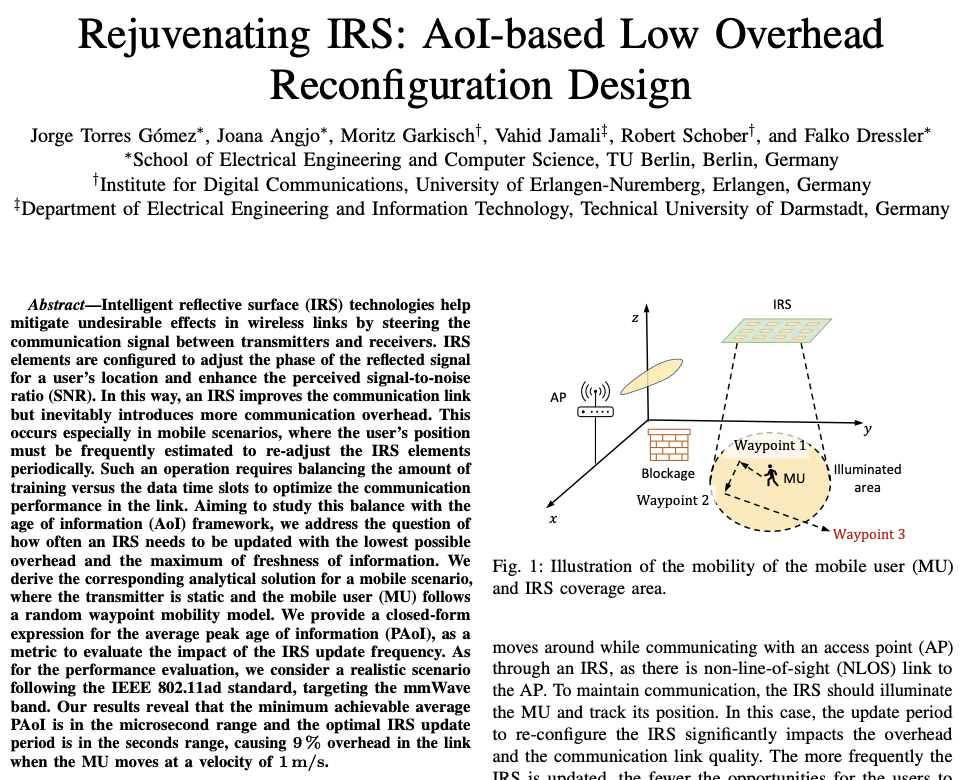Literature Database Entry
zhang2014swarm
Zhongshan Zhang, Keping Long, Jianping Wang and Falko Dressler, "On Swarm Intelligence Inspired Self-Organized Networking: Its Bionic Mechanisms, Designing Principles and Optimization Approaches," IEEE Communications Surveys & Tutorials, vol. 16 (1), pp. 513–537, February 2014.
Abstract
Inspired by swarm intelligence observed in social species, the artificial self-organized networking (SON) systems are expected to exhibit some intelligent features (e.g., flexibility, robustness, decentralized control, and self-evolution, etc.) that may have made social species so successful in the biosphere. Self-organized networks with swarm intelligence as one possible solution have attracted a lot of attention from both academia and industry. In this paper, we survey different aspects of bio-inspired mechanisms and examine various algorithms that have been applied to artificial SON systems. The existing well-known bio-inspired algorithms such as pulse-coupled oscillators (PCO)-based synchronization, ant- and/or bee-inspired cooperation and division of labor, immune systems inspired network security and Ant Colony Optimization (ACO)-based multipath routing have been surveyed and compared. The main contributions of this survey include 1) providing principles and optimization approaches of variant bio-inspired algorithms, 2) surveying and comparing critical SON issues from the perspective of physical layer, Media Access Control (MAC)-layer and network-layer operations, and 3) discussing advantages, drawbacks, and further design challenges of variant algorithms, and then identifying their new directions and applications. In consideration of the development trends of communications networks (e.g., large-scale, heterogeneity, spectrum scarcity, etc.), some open research issues, including SON designing tradeoffs, Self-X capabilities in the 3rd Generation Partnership Project (3GPP) Long Term Evolution (LTE)/LTE-Advanced systems, cognitive machine-to-machine (M2M) self-optimization, cross-layer design, resource scheduling, and power control, etc., are also discussed in this survey.
Quick access
Original Version ![]() (at publishers web site)
(at publishers web site)
Authors' Version ![]() (PDF on this web site)
(PDF on this web site)
BibTeX ![]()
Contact
Zhongshan Zhang
Keping Long
Jianping Wang
Falko Dressler
BibTeX reference
@article{zhang2014swarm,
author = {Zhang, Zhongshan and Long, Keping and Wang, Jianping and Dressler, Falko},
doi = {10.1109/SURV.2013.062613.00014},
title = {{On Swarm Intelligence Inspired Self-Organized Networking: Its Bionic Mechanisms, Designing Principles and Optimization Approaches}},
pages = {513--537},
journal = {IEEE Communications Surveys \& Tutorials},
issn = {1553-877X},
publisher = {IEEE},
month = {2},
number = {1},
volume = {16},
year = {2014},
}
Copyright notice
Links to final or draft versions of papers are presented here to ensure timely dissemination of scholarly and technical work. Copyright and all rights therein are retained by authors or by other copyright holders. All persons copying this information are expected to adhere to the terms and constraints invoked by each author's copyright. In most cases, these works may not be reposted or distributed for commercial purposes without the explicit permission of the copyright holder.
The following applies to all papers listed above that have IEEE copyrights: Personal use of this material is permitted. However, permission to reprint/republish this material for advertising or promotional purposes or for creating new collective works for resale or redistribution to servers or lists, or to reuse any copyrighted component of this work in other works must be obtained from the IEEE.
The following applies to all papers listed above that are in submission to IEEE conference/workshop proceedings or journals: This work has been submitted to the IEEE for possible publication. Copyright may be transferred without notice, after which this version may no longer be accessible.
The following applies to all papers listed above that have ACM copyrights: ACM COPYRIGHT NOTICE. Permission to make digital or hard copies of part or all of this work for personal or classroom use is granted without fee provided that copies are not made or distributed for profit or commercial advantage and that copies bear this notice and the full citation on the first page. Copyrights for components of this work owned by others than ACM must be honored. Abstracting with credit is permitted. To copy otherwise, to republish, to post on servers, or to redistribute to lists, requires prior specific permission and/or a fee. Request permissions from Publications Dept., ACM, Inc., fax +1 (212) 869-0481, or permissions@acm.org.
The following applies to all SpringerLink papers listed above that have Springer Science+Business Media copyrights: The original publication is available at www.springerlink.com.
This page was automatically generated using BibDB and bib2web.







